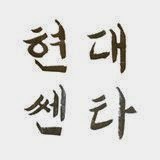2014.6.12 19:00 - 21:00
White Chapel Gallery
Marker is cinema’s exemplary time traveller, from the early collaboration with Alain Resnais (All the Memory of the World, 1956) through his classic La Jetée (1962) toRemembrance of Things to Come (2002), co-directed with Yannick Bellon.
All the Memory of the World (1956) 21 mins
A look at the inner workings of the Bibliothèque Nationale de France in Paris and a meditative piece about the fragility of human memory and the ways in which we try to shore it up. This beautiful film features cinematography by Ghislain Cloquet (Au hasard Balthazar) and music by Maurice Jarre (Lawrence of Arabia). – from Criterion
La Jetée (1962) 28 mins
La Jetée is perhaps the most ‘fictional’ of Marker’s output, weaving its story of a nuclear-devastated Paris in the near future; but it is far from conventional. Lasting 29 minutes, shot in black and white and consisting almost entirely of still photographs – imaginatively blended with dissolves, wipes and fades – this is the bare bones of science fiction. It highlights why we are attracted to science fiction in the first place: not for bug-eyed aliens or galaxy-hopping spaceships, but for the way in which the form can twist our most cherished versions of reality inside out. Indeed, La Jetée belongs to a fascinating epoch in French alternative cinema, when a number of directors engaged with science fiction as a philosophical tool. – Simon Sellars, fromBallardian
Remembrance of Things to Come (2003) 42 mins
…a splendid reminder that his nimble, capacious mind has lost none of its agility, poetry, and power. Ostensibly a portrait of photographer Denise Bellon, focusing on the two decades between 1935 and 1955, the film leaps and backtracks, Marker-style, from subject to subject, from a family portrait of Bellon and her two daughters, Loleh and Yannick (the latter co-authored the film), to a wide-ranging history of surrealism, of the city of Paris, of French cinema and the birth of the cinémathèque, of Europe, the National Front, the Second World War and Spanish Civil War, and postwar politics and culture.
Full of Marker jokes (a great one about artists and cats), word play (Citroen/citron), filmic homages (Musidora makes a memorable appearance), peculiar art history, a consideration of the 1952 Olympics, and astounding segues from French colonialism in Africa to women in the Maghreb, to a Jewish wedding and gypsy culture in Europe, to Mein Kampf and the Nazi death camps (Birkenau, Auschwitz), the film opens with Dali and ends with Mompou, traversing in its short time a world of thought, feeling, and history.
A small masterpiece of montage, Remembrance… is from moment to moment reminiscent of Resnais, Ivens, even Kubrick, but in its deployment of still photographs (as in La Jetée), its theme of history and memory, its subject-skipping montage and rapid shuttle of wit and philosophy, it is pure, marvelous Marker.
La Jetée is perhaps the most ‘fictional’ of Marker’s output, weaving its story of a nuclear-devastated Paris in the near future; but it is far from conventional. Lasting 29 minutes, shot in black and white and consisting almost entirely of still photographs – imaginatively blended with dissolves, wipes and fades – this is the bare bones of science fiction. It highlights why we are attracted to science fiction in the first place: not for bug-eyed aliens or galaxy-hopping spaceships, but for the way in which the form can twist our most cherished versions of reality inside out. Indeed, La Jetée belongs to a fascinating epoch in French alternative cinema, when a number of directors engaged with science fiction as a philosophical tool. – Simon Sellars, fromBallardian
Remembrance of Things to Come (2003) 42 mins
…a splendid reminder that his nimble, capacious mind has lost none of its agility, poetry, and power. Ostensibly a portrait of photographer Denise Bellon, focusing on the two decades between 1935 and 1955, the film leaps and backtracks, Marker-style, from subject to subject, from a family portrait of Bellon and her two daughters, Loleh and Yannick (the latter co-authored the film), to a wide-ranging history of surrealism, of the city of Paris, of French cinema and the birth of the cinémathèque, of Europe, the National Front, the Second World War and Spanish Civil War, and postwar politics and culture.
Full of Marker jokes (a great one about artists and cats), word play (Citroen/citron), filmic homages (Musidora makes a memorable appearance), peculiar art history, a consideration of the 1952 Olympics, and astounding segues from French colonialism in Africa to women in the Maghreb, to a Jewish wedding and gypsy culture in Europe, to Mein Kampf and the Nazi death camps (Birkenau, Auschwitz), the film opens with Dali and ends with Mompou, traversing in its short time a world of thought, feeling, and history.
A small masterpiece of montage, Remembrance… is from moment to moment reminiscent of Resnais, Ivens, even Kubrick, but in its deployment of still photographs (as in La Jetée), its theme of history and memory, its subject-skipping montage and rapid shuttle of wit and philosophy, it is pure, marvelous Marker.
— James Quandt, Senior Programmer, Cinematheque Ontario
원문출처














